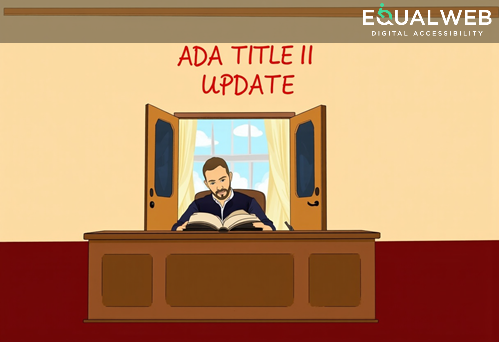Why User Experience is Key to Business Success
User experience (UX) is the backbone of online success. A website`s UX directly impacts how customers perceive your brand, interact with your site, and decide whether to return or leave. Frustrating navigation, slow performance, or inaccessible content can push users away, costing businesses both traffic and revenue.
Modern customers expect seamless and intuitive interactions online. A website optimized for UX builds trust, enhances satisfaction, and increases conversions. Accessibility plays a crucial role in achieving this, ensuring that all users, including those with disabilities, can enjoy a positive experience.
Inaccessible websites create barriers that limit engagement and lead to higher bounce rates. On the other hand, prioritizing UX through accessibility ensures that all visitors, regardless of their abilities, can engage fully with your site’s content and services.
The Role of Accessibility in Enhancing Usability
Accessibility and usability go hand in hand. Usability refers to how easily users can navigate and interact with a website. Accessibility ensures that this usability extends to everyone, including individuals with visual, auditory, motor, or cognitive disabilities.
When businesses prioritize accessibility, they create an environment where all users can:
- Navigate websites effortlessly using keyboards or assistive devices.
- Understand content through clear text, alternative text for images, and readable layouts.
- Access videos and multimedia with captions or transcripts.
Improving usability through accessibility doesn’t just benefit users with disabilities; it improves the overall experience for everyone. Clean designs, intuitive navigation, and well-structured content make websites easier to use for all audiences, including older individuals or users on mobile devices.
By enhancing usability through accessibility, businesses set themselves apart as inclusive and customer-focused, attracting a wider audience and boosting satisfaction.
How Accessibility Increases Customer Loyalty and Engagement
Accessible websites create positive, barrier-free experiences that foster loyalty and engagement among all users. When customers feel seen, valued, and able to interact seamlessly, they are more likely to return, engage, and advocate for your brand.
Key ways accessibility drives loyalty and engagement include:
- Higher Engagement: Users are more likely to explore content, products, and services when the website is easy to use.
- Stronger Loyalty: Inclusive experiences show a commitment to all users, building trust and long-term loyalty.
- Improved Retention: Customers who encounter an accessible website are less likely to leave due to frustration or barriers.
Inclusive websites aren’t just ethical; they are profitable. By meeting the needs of all users, businesses gain a competitive edge, improve their brand perception, and retain customers over time.
Easy Accessibility Solutions for Every Business
The good news is that businesses can improve accessibility without significant redesigns or complex technical work. Simple, effective solutions can make a big difference in enhancing usability and ensuring inclusivity.
Practical accessibility solutions include:
- Accessibility Plugins: Tools like our plugin simplifies the process of adding accessibility features to your website, such as screen reader support, keyboard navigation, and contrast adjustments.
- Alternative Text: Adding descriptive alt text for images ensures users with screen readers can understand visual content.
- Clear and Readable Design: Use proper color contrast, clean layouts, and resizable text to improve readability for all users.
- Video Captions and Transcripts: Provide captions and transcripts for video content to ensure it is accessible to users with hearing impairments.
- Compliance Audits: Begin with an ADA accessibility audit to identify and address accessibility gaps effectively.
By adopting accessibility tools and plugins, businesses can enhance usability, meet compliance standards, and create a more inclusive digital experience without major overhauls.
Conclusion
Web accessibility is a critical driver of user experience, customer loyalty, and retention. By prioritizing accessibility, businesses ensure that all users can engage seamlessly, fostering trust, satisfaction, and long-term success. Simple solutions like accessibility tools make this transformation achievable for every business. Embrace accessibility today—your customers (and your bottom line) will thank you.




